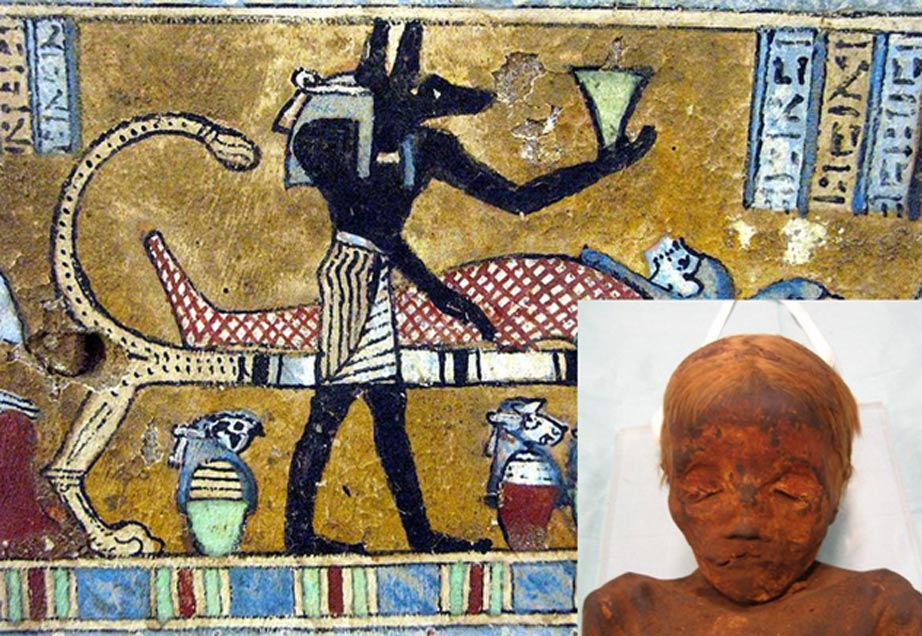According to Dr. Janet Davey from the Victorian Insтιтute of Forensic Medicine in Australia, some ancient Egyptians were naturally blonde or red haired. Her research has brought an answer to an intriguing question connected with Egyptian mummies and the effects of the mummification process.

An article published recently by The Sydney Morning Herald says that the mystery of the red and blonde hair discovered on some ancient Egyptian mummies may finally be solved. The new research was necessary to check the common perception that no ancient Egyptians had hair that wasn’t colored dark brown or black. Until now, most researchers had claimed that the different colors of the mummy hair were a result of the mummification process itself.
Dr. Davey decided to do innovative experiments, which she accomplished with the support of her friend, a retired industrial chemist named Alan Elliot. They prepared a quanтιтy of synthetic natron, and used it on 16 hair samples. Natron was a kind of a salt that was used during the process of mummification to dry out the remains and has often been linked to a supposed hair color “change.”

Davey and Elliot covered samples in the salty powder for 40 days. It is believed that this was the same amount of time that was needed in ancient times to dry out the bodies. The donors of the hair were men and women aged from 4 to 92 years old. Most of the samples were dark hair, with one grey, one fair, and one with henna on it for comparison.
After 40 days, all the hair was removed from the salty powder and they appeared unchanged. Microscopic analysis also showed no change in the hair.
Dr. Davey is convinced that there were fair-haired Egyptians, but believes that the fair-haired mummies are just very rare. This is why Egyptologists used to believe that lighter hair color was created during the mummification process. Moreover, Davey suggests that there were blondes living in Egypt during the Graeco-Roman Period (332 BC – 395 AD).
“Some ancient Egyptians could have been blue-eyed blondes or brown-eyed blondes. I wouldn’t say ancient Egypt was multi-cultural like Australia today but certainly there were various mixes.” – she said.

The secret of mummies with differently colored hair is as old as the Egyptian civilization itself. For example, the oldest known mummy with dyed hair is dated back to 3400 BC. It was the Late Pre-dynastic period of Egypt, a very mysterious time in the history of the country.
The well-preserved mummy of a man was excavated by Wallis Budge in the end of the 19th century. Nowadays, it is exhibited in the British Museum. The mummy was nicknamed ” The Ginger ”, due to the color of its hair. The man was mummified naturally, without the use of natron. He was buried at the desert necropolis in Gebelein, Egypt. The mummy of “The Ginger” sheds light on the very early history of Egypt, and suggests that people who created the Egyptian civilizations could have been blonde or red haired too.

Moreover, one of the greatest pharaohs in history, Ramesses II, had red hair . For many decades, researchers believed that his color was caused by natron applied to the mummy. Another theory said that fair hair in Egyptian mummies was a result of marriages with women from Anatolia. The Hitтιтe prince Zannanza, who was sent from Hattusha to Thebes to marry princess Ankhesenamun, had light skin and hair. The father of the powerful queen Tiye (wife of AmenH๏τep III), Yuya was blonde as well.
On December 14, 2014 Ancient Origins reported on a remarkable discovery in Fag el-Gamous necropolis, which lies along the eastern edge of the Fayum depression near Seila in Egypt and dates to the time when the Roman or Byzantine Empire controlled Egypt, from the 1st to the 7th century AD.

It is an enormous cemetery that is believed to contain over one million burials of ordinary Egyptian citizens that were naturally mummified by the H๏τ and dry desert sands over 1,500 years ago. Over three decades of excavations by Brigham Young University in Utah revealed some incredible finds, such as the remains of large male over 7 feet (2.13 meters) tall, an infant child that was discovered wearing a tunic and jewelry, and unique groupings of burials clustered according to hair color, including blond and redheaded mummies.





